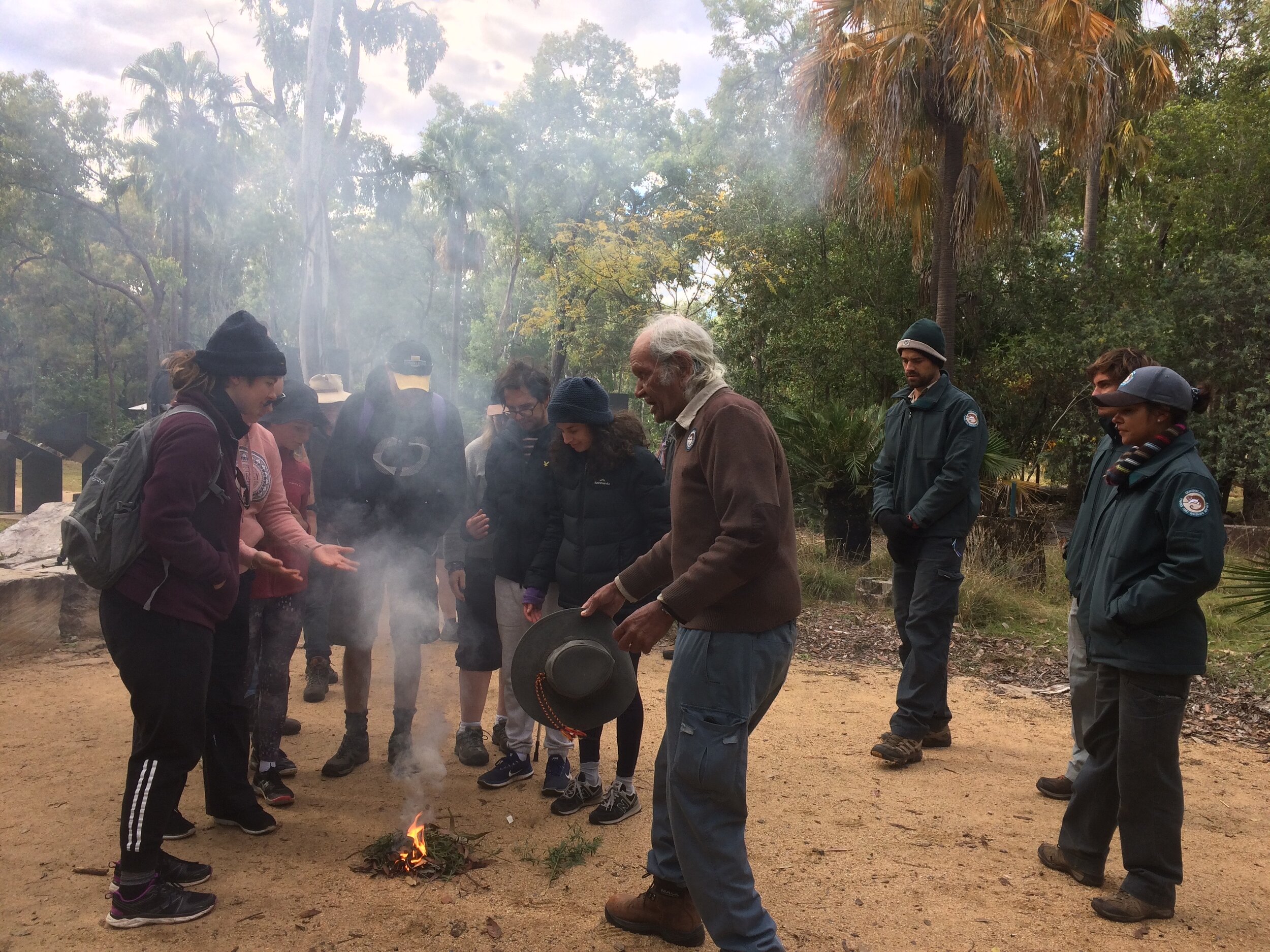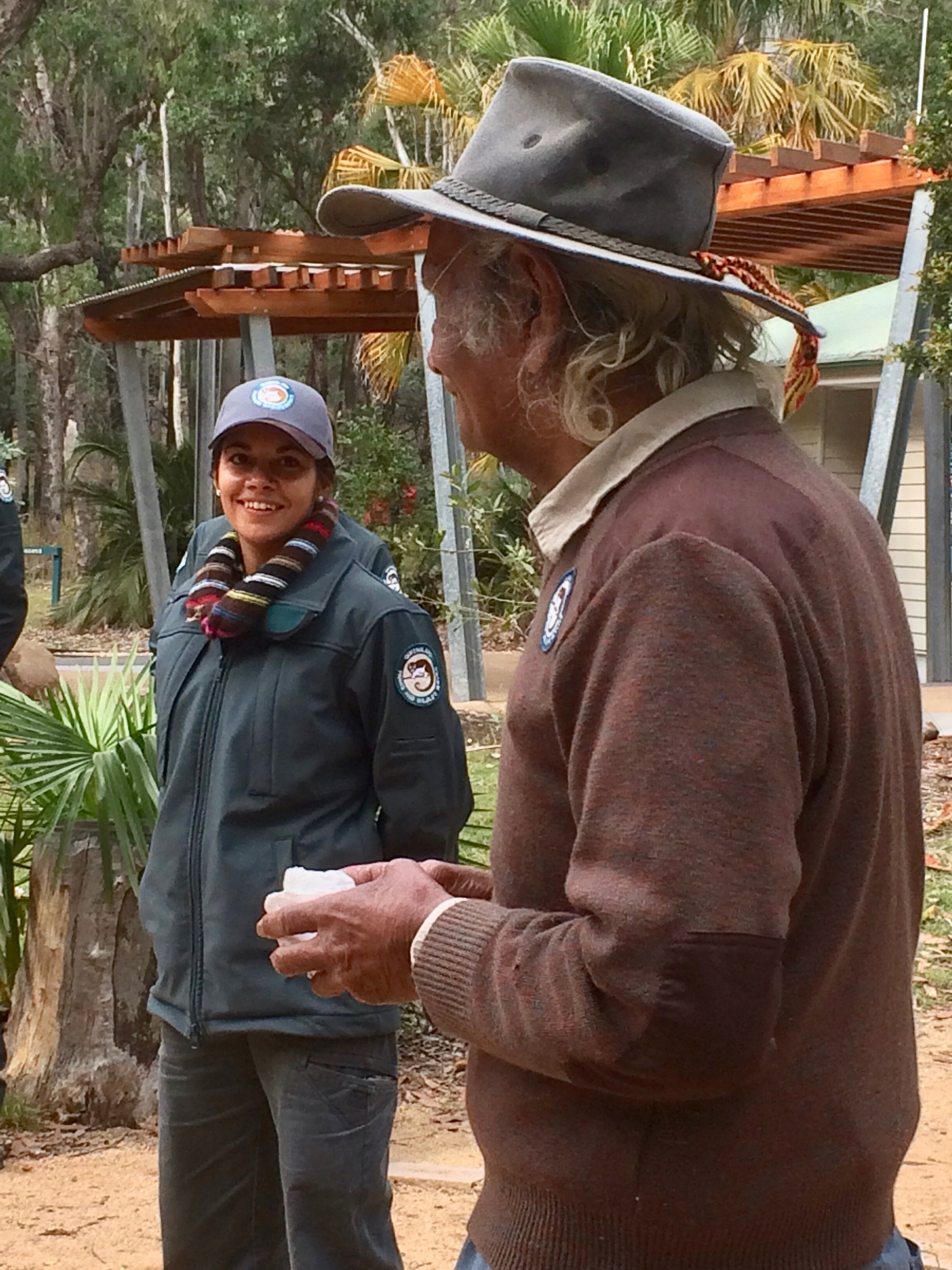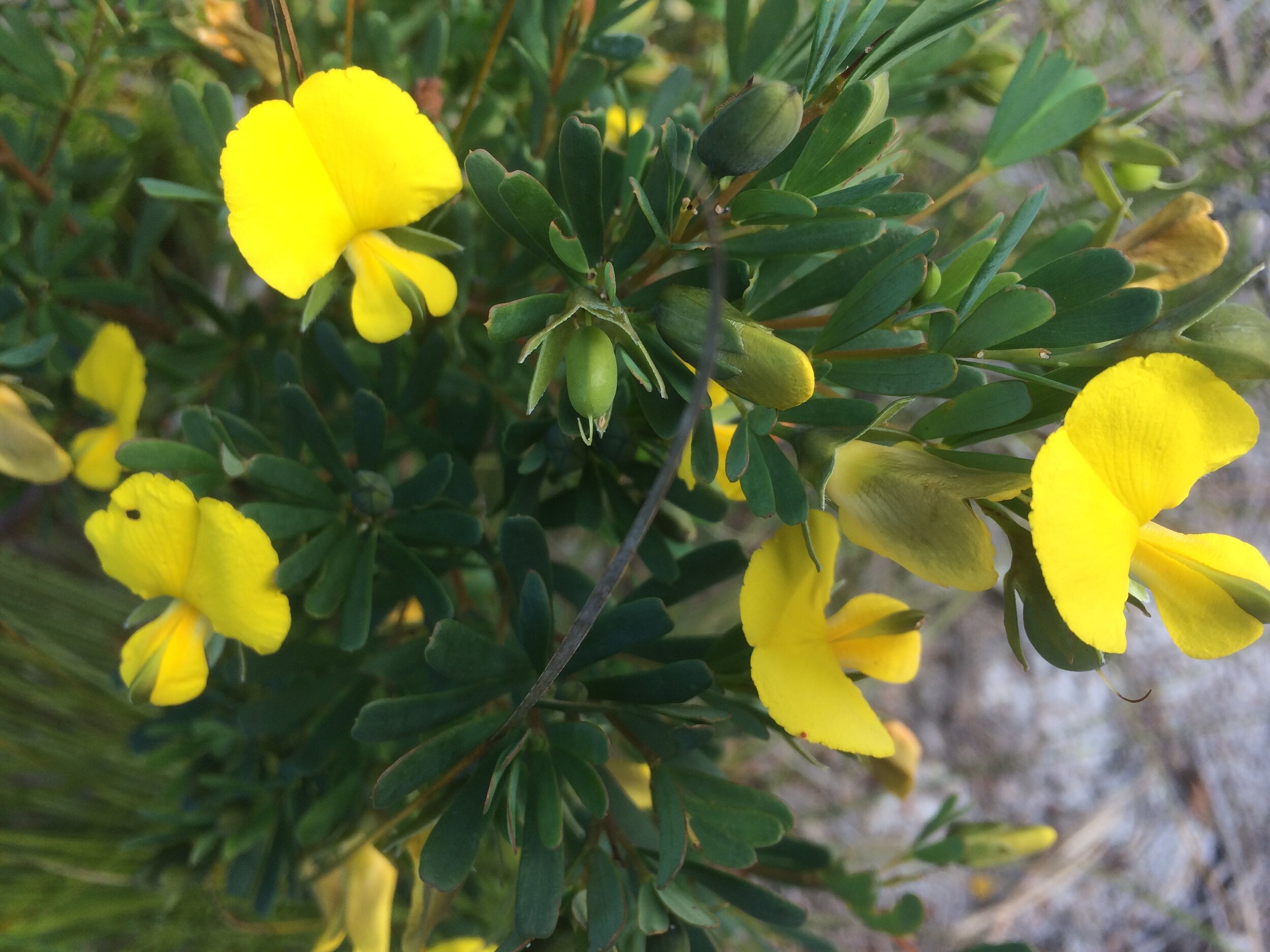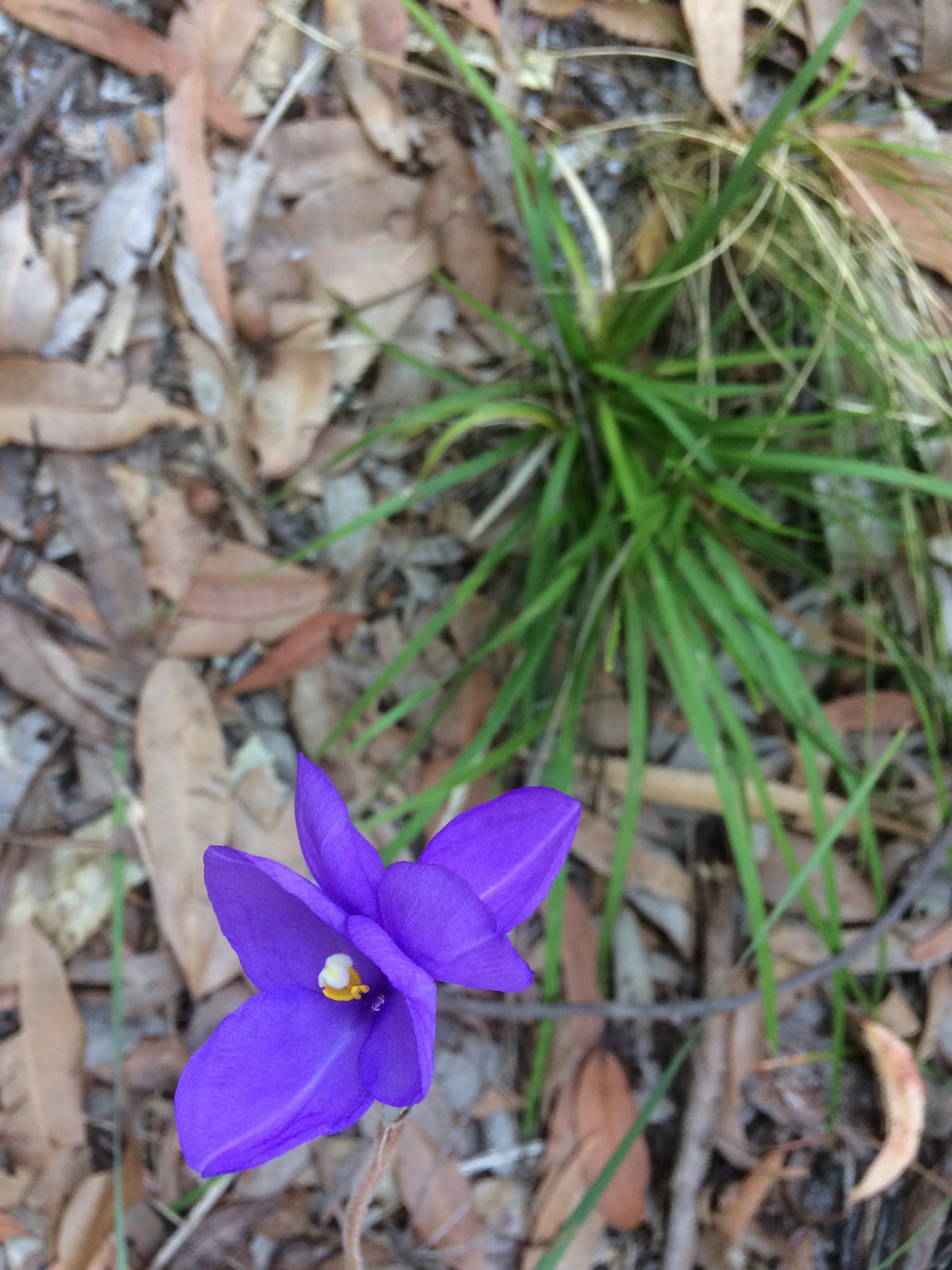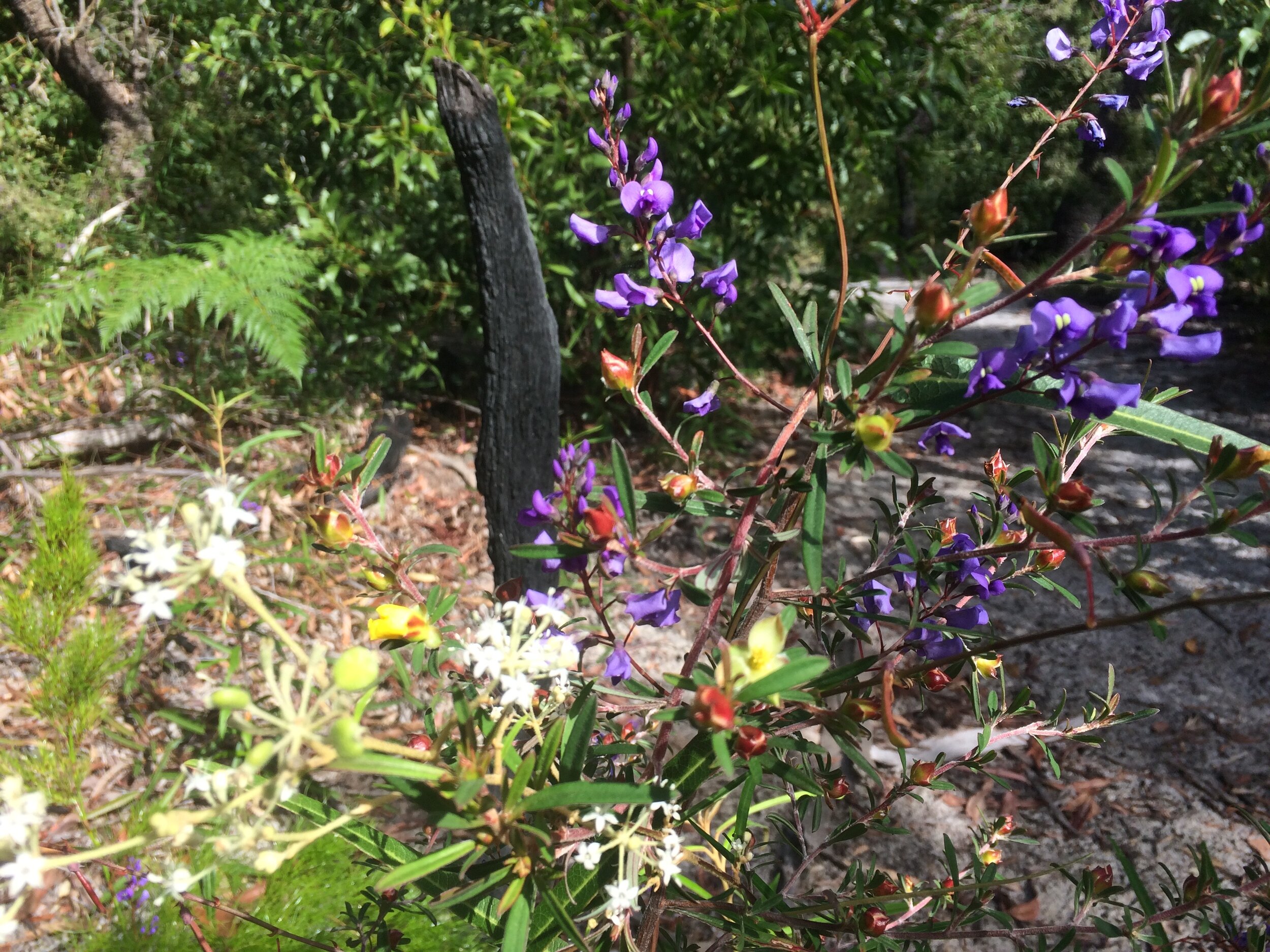Writing from the Bibbulmun Track
/Despair and hope both
The forest is oddly quiet at first, all the way from Kalamunda in the Perth hills where the track starts, to Collie, over three hundred kilometres south. You wonder if winter is to blame—birds are quieter in the winter, aren’t they?—but the blackened trunks and epicormic growth of eucalypts in distress and the thriving weeds in the understory tell that other story, the one all Australia tells now, of fires both wild and planned, of millions of animals perishing. There’s a telephone number to call if you find an injured animal, although there are no injured animals; there are hardly any animals at all.
You have been told that volunteers help maintain the Bibbulmun track, including the forty-nine campsites with their three-sided sleeping shelters. One evening, early on in the hike, the weather turning foul, you opt for the shelter instead of your tent. You are treated to a run of storms, with lightning followed immediately by thunder, and rain then hail that crashes onto the roof and sounds like many billiard balls dropped onto tile. Shelter is a good word for what you experience, and you think of those volunteers and the work they do. Not long after, you meet a volunteer, at a riverside campsite, doing a routine maintenance check. The day before, he tells you, he fixed a table with a lean at another campsite. You know that table, you exclaim; your stove wouldn’t work properly due to the lean. Next time it will, he says, and you both laugh. You are re-reading The Lord of the Rings on this hike and you want to tell him that the volunteers would be the hobbits and heroes of this story but you fear something might be lost in translation so you don’t say anything.
The trees
The trees, all the way from Balingup to Denmark, over five hundred kilometres, ask you over and over to crane your neck and try to take them in. They are the biggest trees you have ever seen other than the Californian redwoods. They are like old friends and yet not friends at all, for you can probably only make friends with trees of one forest in a lifetime and yours is near Binna Burra in Lamington National Park, among Antarctic beeches, not here. Still, you crane your neck and learn their names, karri and tingle. There are birds now, and animals you’ve never seen before, and you do your best to learn their names too. You learn that tingle trees are Gondwana trees, just like Antarctic beeches. Once you know even a little, you feel more at home.
The sea
The sea appears one day and ignores you, despite your awe. You walk along cliffs and down steps to beaches to dive into blue-green water when the sun shines. You take a canoe across one inlet, as if you know how to do that, and walk across another with your pants rolled up as high as they’ll go and your boots around your neck.
Coffee etc.
The Wagon in Collie, the Shed in Balingup, the brand new Just Lofti in Pemberton, Ravens in Denmark and Naked Bean in Albany, make lifechanging coffee, and Garden Eats in Dwellingup adds cake with bitter cherry and sweet cardamom you wish you’d bought a second and third piece of for later. The Karri Country Good Food store in Northcliffe and A2 in Balingup welcome you to buy only the small amounts of things a hiker needs, teeny bags of nuts and dried fruit and olive oil and soap and chocolate. Crossings bakery in Pemberton offers the apple pie you’d do the hike again for, and the Green Pantry in Denmark stocks a lembas-like fruit and nut bread from Bred in Albany that sustains you for the final days.
The toasted sandwich from the Cape Café at Cosy Corner may be the best meal you’ll ever eat.
Boots or shoes, wet or dry
It’s the angst-ridden, ire-raising debate among hikers, many of whom these days swear by shoes and celebrate wet feet by wading the puddled track and through the rain. Not you. You wear rain pants over the heavy boots you swap out for Crocs in those long, deep puddles so the boots stay dry, you tell others, smugly. On the second-to-last day a squall turns into a dump of rain that pours water down your boots before you can get your rain pants on and you learn that even wet boots are all right.
Walkers are happy
With wet or dry feet, walkers may be happier than people who don’t walk, the Reids, Amanda and Julian, Tristy and Angela, and Lance and Jo, trail companions you could never have planned for who make the trail so much better. And Jim, your allocated Bibbulmun volunteer and a walker, who makes funny jokes about rats and bats. It is a thesis worth testing, the walker happiness thesis, because if it proves correct we should all just walk.
The whole may be more than the sum of the parts
You told yourself, before you left home, that a hike of a thousand kilometres is just like four hikes of two hundred and fifty kilometres and you have done one of those. It proves true, although you also start to see that the whole may be more than the sum of the parts. In the final days, you wonder what you’ve learned. You think you haven’t really learned anything. The Zen proverb quoted by a friend helps. ‘Before enlightenment, chop wood, carry water. After enlightenment, chop wood, carry water.’
When you finish, part of you wants to turn around and walk back, and not just for the apple pie. There was also the toasted sandwich.


